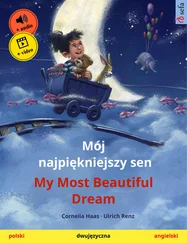I paid for the gift and handed it to Mary, who then walked out of the store. The angakok shouted something at her and she burst into tears and fled. She dropped the snow globe just outside the store and kept on running. I picked it up and put it in my coat pocket.
Back in the store now, I glared at the angakok and he glared right back. “Okay, got to deliver some boxes to the clinic,” Michael said. “Be back in a short time.” He lifted two boxes and a somewhat larger one, balanced them in his arms, and left by the back door. If I had been in my right mind, I would have followed him. But I just stood there next to the remaining snow globes.
Then I heard the transistor radios. This creeped me out no end.
I turned and saw that the angakok, whom I could smell from across the store, was sitting up and leaning against the wall. He was holding a screwdriver with the sharp end right up against an electric wall socket, as if he were about to jam the screwdriver into it. He was madly grinning, many teeth gone, and bobbing his head back and forth as if he alone could detect a lively tune inside the cacophony of radio static. Perhaps most arresting of all, he was holding a teddy bear. The store carried a variety of stuffed animals: owls, bears, tigers, walruses, seals, ravens.
The angakok stood, dropped the screwdriver on the floor, walked over to a shelf, and took up a sewing kit. He retreated to his corner, where he removed his mangy overcoat and began to sew the teddy bear to it by its four legs. Then he turned up the volume of each of the transistor radios. When finally he slid to the floor, a number of radio batteries fell from his coat pockets.
I do not know to this day what reckless impulse compelled me to deepen the antagonism between us, except that I wanted something to happen, something to end once and for all. I walked to the shelf that held the stuffed animals, found an identical teddy bear, looked at the price tag, and said, “Don’t forget to pay the nine dollars for that bear.” I pointed to the stuffed bear he had sewn to his overcoat.
“You know how I’ll pay for this bear?” he said, as if choking on the English words, as if he had rocks in his throat.
“No.”
“I will tell Pootogik I’m not going to put him inside one of those,” he said, pointing to the snow globes. “He will give me as many bears as I want.”
I did not know how to respond. He said, “But you choose— you choose which one you want to live inside. Right now — choose!”
“Keep the fuck away from me!” I said with all the force I could muster.
I walked along the side of the store opposite him and out the front door. Mary was standing not more than twenty yards away; she had been watching the store. I handed her the snow globe with the hula dancers inside. I attempted a little joke: “I wouldn’t mind being in there with those hula dancers.” Which of course hardly registered at all with Mary, and she did not laugh or even crack a smile; she ran off toward her house.
Then I saw Michael returning empty-handed from the clinic. He walked up to me and said, “Did he steal anything while I was gone? I know he did. What did he take?”
Humiliated, dispirited, hapless, infantilized — you name it — my catalogue of despondency seemed endless in my interactions with this angakok. Maybe this is how it should be, I thought, this is what I deserved, representing as I must centuries of colonial intervention, or something like that, though I was in Pangnirtung only as a kind of stenographer for elderly people who told folktales that I fully understood to be indispensable and sacred to Inuit culture and history.
But this angakok couldn’t care less what I knew or didn’t know, or if I did or did not harbor good intentions. He wanted me to walk backwards two thousand miles south. So far he had followed me from grave marker to grave marker in the cemetery, muttered at me, spat at me, jammed his thumbs up my nostrils, and threatened to imprison me in a snow globe. I had to admire his inventive tenacity even while wanting him to disappear. Even knowing he might kill me. Part of his résumé as an angakok was that he had killed people.
He had won. Whatever battle we were having, he had won it. I could already feel myself leaving Pangnirtung. Such a beautiful place, really, but it had become impossible for me. Let’s face it, I thought, I have become unhinged. In the convenience store Michael said, “This angakok won’t leave until you leave.”
So I arranged for a flight out. The morning before I left, however, I recorded a story, which when typed out amounted to only a couple of pages. A woman named Jenny Arnateeyk — she was the elderly caretaker of the cemetery — told it, and I gave it the title “The Visitor Put in a Snow Globe,” which pretty much sums up the plot.
The Visitor Put in a Snow Globe
A visitor arrived and an angakok arrived at about the same time and things got bad right away. The next day the angakok put the visitor inside a snow globe. He got right to it. He didn’t hesitate. Then the angakok dropped the snow globe through the ice.
The snow globe floated up again and could be seen just under the ice if you rubbed the snow away with the side of your hand. A lot of people did this, mostly children.
Some days passed by. The angakok said, “Have you noticed how much better the weather has been since I dropped that snow globe through the ice? Have you noticed how many fish have been caught? How much better everyone is eating these days?”
When children looked at the snow globe, they saw that the visitor was keeping busy. He had a little house in there. He had a fireplace that never ran out of wood, so he kept warm. It didn’t seem so bad except he was under the ice. That had to be strange for the visitor. Children visited him every day — that must have been good for him.
One day the angakok said, “I’m going a long way to visit some ravens. Then I’m going even farther to visit some other ravens. When I’m gone, don’t take pity on the fellow inside the snow globe. If you let him out, the weather will be terrible and all the fish will swim great distances away.”
But when the angakok left to visit ravens, the people in the village took pity, and they got the snow globe out from under the ice. Then the visitor was his normal size again, and he said, “Thank you. I was only visiting.”
“How was it inside a snow globe?” someone asked.
“Unusual.”
“Well, then — you’d better leave.”
The visitor left on a mail plane. The villagers waited for the weather to turn and for all the fish to leave. But the weather stayed all right, and there were plenty of fish to eat. The villagers hoped the angakok kept visiting ravens for many years to come.
All this happened quite recently.
I returned only once to Pangnirtung, to write about soapstone carvings, in late August of 1992, taking the hour and a half flight from Frobisher Bay to the village’s airstrip. I stayed with an Inuit host family for a week; their prefabricated house overlooked Pangnirtung Harbor. My hosts assured me that it was “too early” for any angakok to arrive, and I was greatly relieved. It was clear that my previous visit had become part of local lore, and from the little I could gather, my difficulties at that time had become a kind of entertainment.
Once I had unpacked, I went to meet the three soapstone carvers whose work I was to write about, and they told me that only weeks earlier a photographer from Nova Scotia had been in the village to take pictures. This turned out to be Robert Frank, one of the great twentieth-century photographers. Frank’s five-day visit to Pangnirtung is not a part of his biography much mentioned, but to my mind the photographs he took there — the stark, bouldered terrain, the hardened mud roads, the prefabricated Inuit houses, the graveyard — are commensurate on every level with the photographs he took over the course of decades in various parts of Nova Scotia. In a book titled Pangnirtung, he writes: “Prefabricated homes along the main road in Pangnirtung. At times a decorated window — reflections inside or outside. Stones — maybe a balance of sky above…”
Читать дальше












